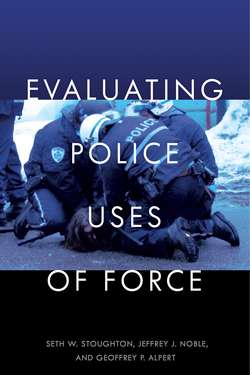Читать книгу Evaluating Police Uses of Force - Seth W. Stoughton - Страница 14
На сайте Литреса книга снята с продажи.
“Pattern and Practice” Litigation under 42 U.S.C. § 14141
ОглавлениеThe Attorney General of the United States is authorized by federal law to sue police agencies that engage in a pattern or practice of constitutional violations. The statute, 42 U.S.C. § 14141, reads as follows:
1 (a) Unlawful conduct. It shall be unlawful for any governmental authority, or any agent thereof, or any person acting on behalf of a governmental authority, to engage in a pattern or practice of conduct by law enforcement officers or by officials or employees of any governmental agency with responsibility for the administration of juvenile justice or the incarceration of juveniles that deprives persons of rights, privileges, or immunities secured or protected by the Constitution or laws of the United States.
2 (b) Civil action by Attorney General. Whenever the Attorney General has reasonable cause to believe that a violation of paragraph (1) has occurred, the Attorney General, for or in the name of the United States, may in a civil action obtain appropriate equitable and declaratory relief to eliminate the pattern or practice.
Procedurally, the Department of Justice first conducts an investigation by reviewing police records, interviewing officers and civilian witnesses, and compiling data. Ultimately, the investigators can issue a report concluding that officers at the police agency being investigated have or have not engaged in a “pattern or practice” of constitutional violations. Frustratingly, there is no precise definition of “pattern or practice”; at best, it is clear that some degree of frequency is required—isolated acts are insufficient—although that degree may not be sharply defined. If the Department of Justice concludes that there was a pattern or practice of unconstitutional violations, it can file a federal lawsuit against the police agency.
Although it is theoretically possible for a police agency to litigate the issue, none actually do so. In practice, the police agency and the Department of Justice engage in bargaining that results in a negotiated settlement in which the agency promises to take certain, specified actions to end constitutional violations and to improve the delivery of police services. The settlement agreement can be submitted to the court for approval, and, if the court approves, the agreement is formalized as a consent decree. The court selects a monitor—typically a law firm or consulting group—to supervise and publish regular reports about the police agency’s ongoing efforts to fulfill the requirements of the consent decree. If the monitor finds the agency is falling short or refusing to attempt to make progress toward satisfying the decree, the original litigation can be reinstituted or new litigation can be filed.
Fourth Amendment violations related to the use of excessive force are not the only predicate for a § 14141 lawsuit or consent decree, but they are a common factor. As law professor Stephen Rushin, who has studied § 14141 investigations and litigation extensively, has pointed out,
Almost every single negotiated settlement signed by the DOJ pursuant to § 14141 addresses the policing agency’s use of force. Some of these use-of-force stipulations regulated many different possible issues related to force. Others more narrowly targeted a particular type of force at issue in the case. In total, virtually all of the negotiated settlements that involved monitors included a section regulating the use of force.9
